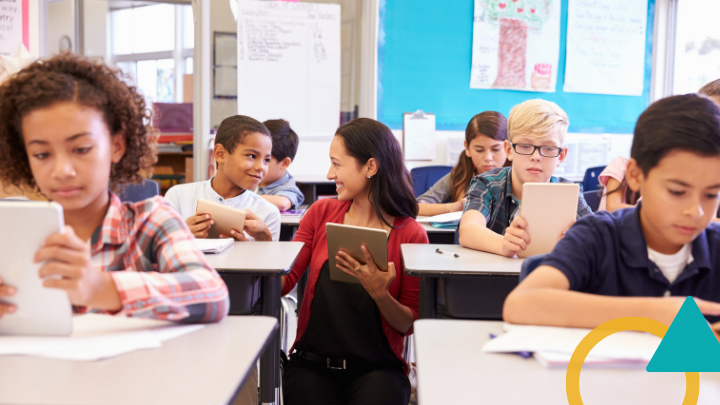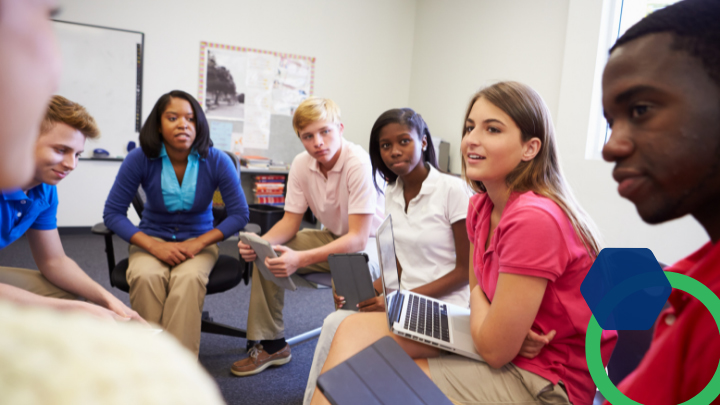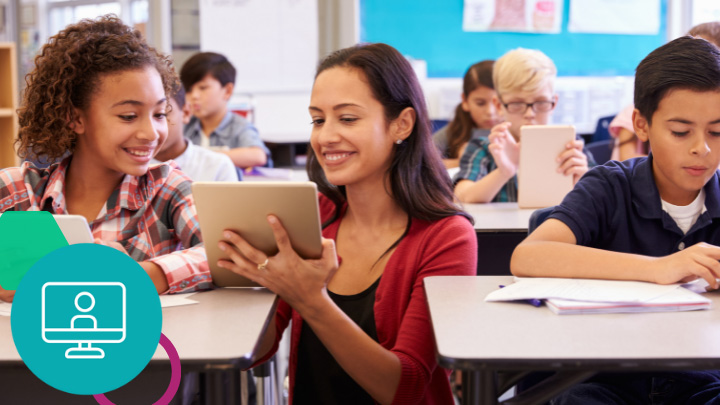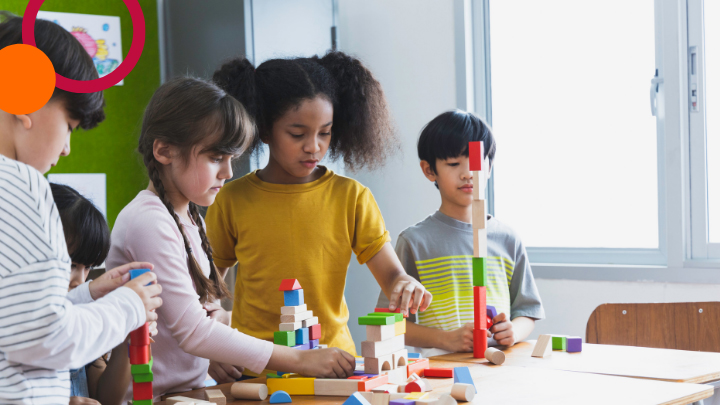Allison Bucklew was selected to be part of the BetterLesson Master Teacher Project on Culturally-Responsive Teaching and Learning, sponsored by The Ewing Marion Kauffman Foundation. Her strategies and expertise were showcased on Saturday, May 30th, at the Culturally Responsive Teaching and Learning Insight Conference.
If I ask 30 teachers to define the term “classroom management,” I will receive 30 unique, sometimes conflicting, answers. One common characteristic will probably be an emphasis on rewards (or incentives) and consequences. Less often do we focus on teaching skills or helping students learn. This has always confused me. We do not punish students if they cannot blend a phoneme or solve a geometry problem, but we will punish students who don’t have the emotional coping skills to handle a strong emotion or the social skills to tell a peer they feel hurt. Through a concept called the “social discipline window“, we can help teachers to reflect on power dynamics in their classrooms and how that is linked to students’ emotions.
The Brain Science of Punishment and Reward
In the 1970s, two psychologists coined the term “learned helplessness” when studying animal behavior in dogs. They recorded results which supported the idea that, if someone is repeatedly subjected to negative feedback (electrical shock, anxiety, an insurmountable task, etc), they will eventually stop trying to avoid the stimulus, even when an opportunity to change is presented. When the animals did the “right thing,” they were rewarded. When they did the “wrong thing,” they received an electrical shock. The researchers noticed that eventually the animals would tolerate the electrical shocks, rather than hopping over a short barrier to avoid the negative stimulus. Similarly, if students consistently receive demerits or detentions for coming to class without their materials, they may continue to forget their notebooks and pencils because they may think “It doesn’t matter what I do anyway.”
The Social Discipline Window
Paul McCold and Ted Wachtel created the social discipline window framework as a tool to reflect on power dynamics in communities, and this is a helpful tool for teachers working to build a more positive, restorative classroom community. This model describes four basic approaches to maintaining norms and setting behavioral boundaries. Each approach is represented as a combination of varying levels of boundaries and support. The restorative approach is characterized as doing things with people, rather than to or for them.
The graphic below, adapted from Chuck Saufler, combines this framework with brain science to show how each approach to maintaining behavioral norms in schools affects students’ emotional states and readiness to learn.
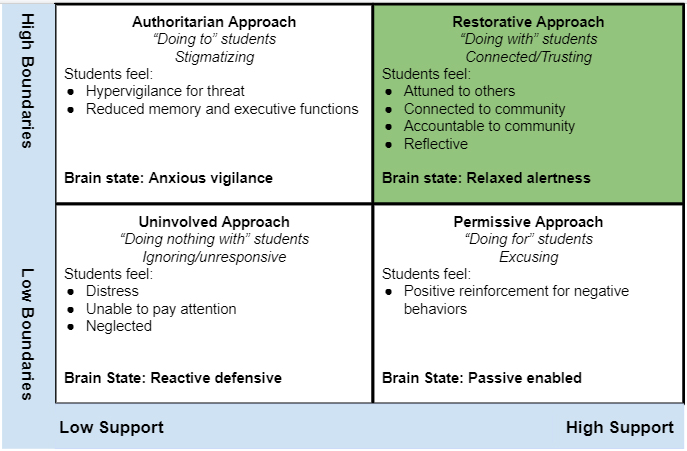
When students are stuck in authoritarian, uninvolved, or permissive learning environments, their brains are not primed for growth. Instead, they must use their brain-power to cope with the negative feedback associated with these environments.
A Restorative Classroom Environment
A teacher who spends time ensuring that their students are in a restorative environment might provide additional supports for students in the areas where they are struggling. This might include teaching students the social-emotional skills they need to handle difficult interactions, academic habits needed to persevere on difficult content, or how to access materials when they need them. The supports should be paired with high levels of accountability and structure. When students are not successful in the classroom, teachers traditionally ask themselves, “What is the appropriate consequence for not meeting the expectation and the appropriate reward for doing well?” Teachers who use the social discipline window to reflect might instead ask themselves, “What structures can I put in place to clarify the expectation, and what supports can I provide to ensure my students have the skills to get there?”
The “Analyzing Classroom and School Structures with the Social Discipline Window” strategy provides teachers and leaders with a reflection protocol that connects students’ behavior to their brain state and their needs. For instance, a student who is frequently withdrawn during class may be in a passive enabled brain state, indicating that they need more limits or structure. A student who is highly reactive to consequences may be indicating a brain state of anxious vigilance, indicating a need for more support in reaching the expectations.
If I were to ask any teacher which quadrant they would like their learning environment to fall within, I’m certain that 100% would answer, “restorative.” By shifting our mindsets away from reward and punishment to thinking about boundaries that set high expectations and supports that teach habits to meet those expectations, teachers can move students out of a space of learned helplessness towards a space of autonomy and empowerment.
